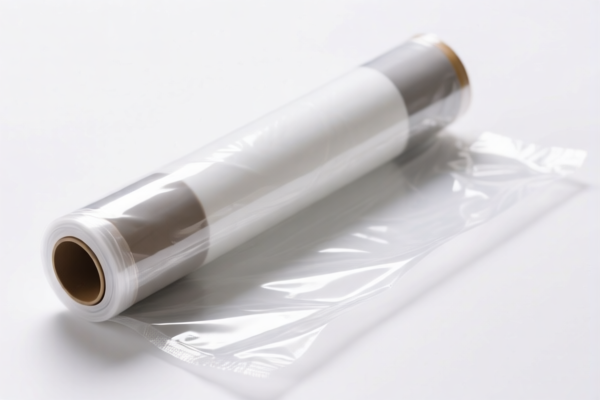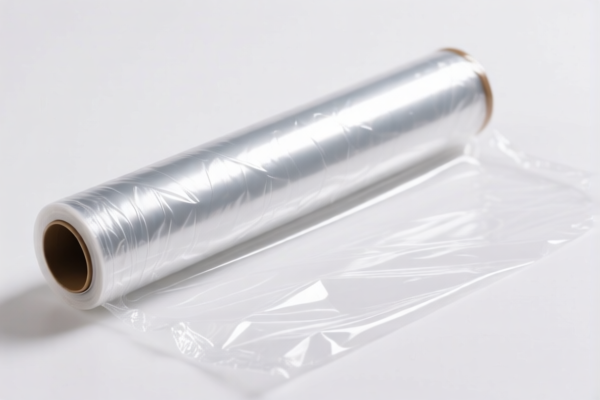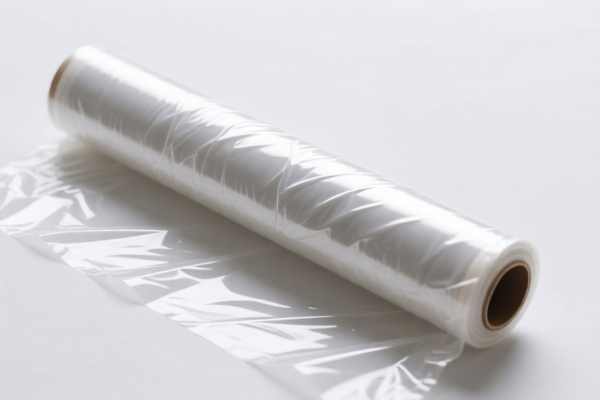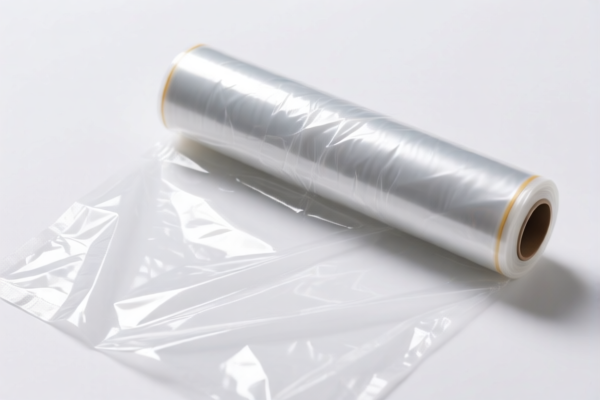| HS Code | Official Doc | Tariff Rate | Origin | Destination | Effective Date |
|---|---|---|---|---|---|
| 3919102055 | Doc | 60.8% | CN | US | 2025-05-12 |
| 3919905060 | Doc | 60.8% | CN | US | 2025-05-12 |
| 3921904010 | Doc | 34.2% | CN | US | 2025-05-12 |
| 3921904090 | Doc | 34.2% | CN | US | 2025-05-12 |
| 8544499000 | Doc | 58.9% | CN | US | 2025-05-12 |
| 8548000000 | Doc | 55.0% | CN | US | 2025-05-12 |




Refrigeration Film
Refrigeration film, also known as cold room film or freezer film, is a polymeric sheeting material designed to maintain cold temperatures within refrigerated or frozen storage spaces. It is primarily used in the food processing, storage, and distribution industries.
Material
The vast majority of refrigeration film is constructed from low-density polyethylene (LDPE). LDPE is chosen for its flexibility, low temperature resistance, good sealing properties, and relatively low cost. Some specialized films incorporate additives for improved performance, such as:
- UV inhibitors: For protection against sunlight degradation in outdoor storage.
- Anti-fog additives: To reduce condensation build-up, improving visibility.
- Anti-static additives: To minimize static cling, aiding in handling.
- VCI (Vapor Corrosion Inhibitor) additives: For protecting metal components within the refrigerated space.
Purpose
The primary purpose of refrigeration film is to:
- Temperature Control: Reduce temperature fluctuations and maintain consistent cold chain conditions.
- Moisture Retention: Minimize dehydration of stored products, preserving quality and weight.
- Contamination Prevention: Provide a barrier against external contaminants like dust, odors, and pests.
- Product Protection: Protect products from physical damage during handling and storage.
- Energy Efficiency: Reduce energy consumption by minimizing air leakage and temperature loss.
Function
Refrigeration film functions by creating an airtight or nearly airtight enclosure around stored products. This enclosure:
- Reduces Air Exchange: Limits the inflow of warm, humid air and the outflow of cold, dry air.
- Forms a Microclimate: Creates a localized environment with optimal humidity and temperature levels.
- Provides a Seal: When properly applied, the film creates a barrier against external elements.
- Facilitates Pallet Wrapping: Typically used with pallet wrapping machines to secure products to pallets.
Usage Scenarios
- Cold Storage Warehouses: Wrapping pallets of food products (meat, poultry, seafood, fruits, vegetables) before storage.
- Food Processing Plants: Protecting partially processed goods during temporary storage or transport within the facility.
- Distribution Centers: Securing pallets for shipment, maintaining cold chain integrity during transit.
- Blast Freezing: Used during the blast freezing process to minimize dehydration and product damage.
- Temporary Storage: Providing a protective barrier for products during short-term outdoor storage.
Common Types
- Standard Pallet Wrap: The most common type, available in various thicknesses (measured in mils) and widths. Typically clear or translucent.
- Pre-Stretch Film: Film that has been pre-stretched during manufacturing, reducing the effort required during application.
- Self-Adhesive Film: Contains an adhesive layer for enhanced tack and sealing, useful for securing irregularly shaped loads.
- Ventilated Film: Features perforations to allow for airflow, used for products that require ventilation (e.g., certain fruits and vegetables).
- Co-Extruded Film: Multiple layers of polyethylene with different properties, offering improved strength, puncture resistance, and sealing performance.
- Colored Film: Used for identification purposes or to block sunlight. (e.g. Black film for light sensitive products)
Refrigeration film, based on the provided information, falls under the category of plastic film used for specific applications. The following HS codes are relevant:
- 3919102055: This HS code covers self-adhesive plates, sheets, film, foil, tape, strip and other flat shapes, of plastics, whether or not in rolls: In rolls of a width not exceeding 20 cm: Other Other: Other. This could apply if the refrigeration film is self-adhesive and supplied in rolls less than 20cm wide. The total tax rate is 60.8% (Base tariff: 5.8%, Additional tariff: 25.0%, Post-April 2, 2025, additional tariff: 30%).
- 3919905060: This HS code covers self-adhesive plates, sheets, film, foil, tape, strip and other flat shapes, of plastics, whether or not in rolls: Other: Other Other. This applies to self-adhesive refrigeration film not specifically defined by roll width. The total tax rate is 60.8% (Base tariff: 5.8%, Additional tariff: 25.0%, Post-April 2, 2025, additional tariff: 30%).
- 3921904090: This HS code covers other plates, sheets, film, foil and strip, of plastics: Other: Other: Flexible Other. This applies to non-self-adhesive, flexible refrigeration film. The total tax rate is 34.2% (Base tariff: 4.2%, Additional tariff: 0.0%, Post-April 2, 2025, additional tariff: 30%).
Chapter Breakdown:
- 39: Plastics and articles thereof. This chapter broadly covers all products made from plastics.
- 3919: Self-adhesive plates, sheets, film, foil, tape, strip and other flat shapes, of plastics. This heading specifically covers adhesive plastic products.
- 3921: Other plates, sheets, film, foil and strip, of plastics. This heading covers plastic plates, sheets, film, foil and strip not covered elsewhere.
Important Note:
The applicable tax rate will depend on whether the refrigeration film is self-adhesive and its physical characteristics (e.g., flexibility). Please verify the material composition and intended use to determine the most accurate HS code.
Customer Reviews
No reviews yet.